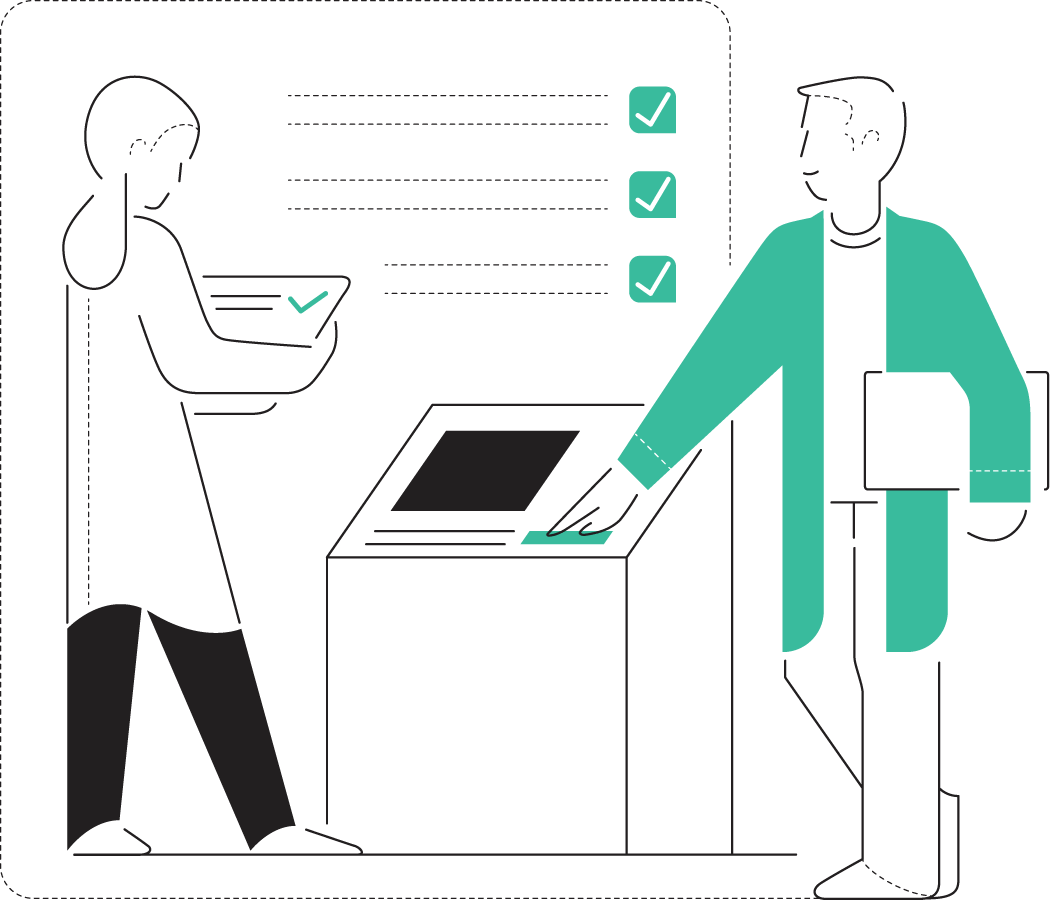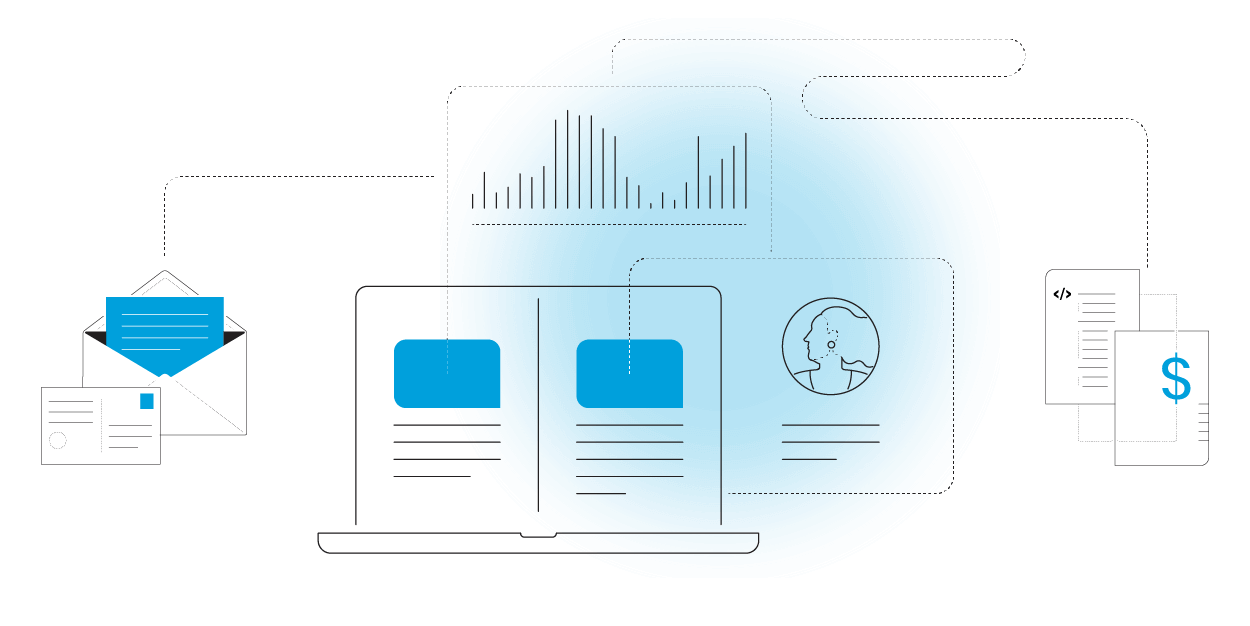Why Negotiation Is the Deciding Factor in B2B Sales
High-stakes B2B sales negotiations often hinge on a single conversation, a conversation in which preparation, positioning, and precision can mean the difference between a signed contract and a stalled opportunity. In today’s complex buying environment, the average B2B deal involves 13 stakeholders across multiple departments, each with different goals, concerns, and approval processes. That’s a lot of moving parts, and every one of them can influence whether your proposal makes it to the finish line. Meanwhile, as much as 40–60% of qualified B2B opportunities still end in no decision, underscoring how critical it is for sales teams to master the art and science of negotiation.
Effective B2B negotiation tactics go far beyond price adjustments; they’re ultimately about aligning value with outcomes, building consensus, and turning buyer hesitation into confidence. Whether you’re navigating procurement hurdles, managing long sales cycles, or addressing last-minute pushback, the ability to steer negotiations strategically is what separates top performers from the rest. In this guide, we’ll explore proven frameworks, field-tested techniques, and real-world scenarios that can help your team close deals faster, protect margins, and strengthen long-term customer relationships.
Understanding the B2B Negotiation Landscape
Before you can apply effective B2B negotiation strategies, you need to understand what makes this environment uniquely challenging. Unlike B2C, B2B sales are slower, more collaborative, and exponentially more complex. The stakes are higher, the timelines are longer, and every deal is under the microscope from ROI scrutiny to legal reviews.
A typical B2B deal isn’t a one-on-one conversation. It’s a multi-threaded process that often involves a dozen or more stakeholders. Each person brings their own priorities, objections, and level of influence. Legal and procurement teams step in late-stage, often introducing friction. Budget holders ask for concessions. Champions want speed. Gatekeepers enforce process. It’s a negotiation web that requires strategic planning, not just charm at the table.
Data Spotlight: 72% of new B2B sales opportunities stall in the middle-to-late stages of the pipeline (defined as no customer action for 60+ days).
That’s why it’s critical to identify and understand your stakeholders early like who has decision-making power, who’s likely to push back, and who can become your internal advocate. The better you map this landscape, the more precise (and successful) your negotiation strategy becomes.
Successful negotiation starts with knowing who’s at the table, as well as who is operating behind the scenes. Every B2B deal typically involves a mix of roles:
- Decision Maker: Holds final approval authority; align your proposal to strategic goals.
- Influencer: Offers input on technical or functional fit; tailor details to their concerns.
- Champion: Your internal advocate; equip them with materials to sell your value internally.
- Blocker: May resist change or introduce risk concerns; address objections early.
Understanding who’s involved and what drives their decisions is only half the battle. The next step is preparing your strategy so you can enter every conversation with clarity and confidence.
Pre-Negotiation Preparation
Winning the deal often starts long before the negotiation itself. Strong sales negotiation preparation gives your team the clarity, alignment, and confidence needed to navigate objections, hold the line on pricing, and build consensus with multiple stakeholders. Going in unprepared? That’s how deals stall, margins erode, or trust gets lost before the contract is even signed.
Do Your Homework
Start with deep account research. Who are the decision-makers? What internal priorities or pain points does your solution address? Map the org chart, study recent strategic initiatives, and identify competitors in play. Look beyond the buyer and instead find out who will use the product, who approves the budget, and who could block the deal.
Define Objectives and Boundaries
Every negotiation should start with clearly defined goals. What’s your ideal outcome? What’s your fallback? Establish your BATNA (Best Alternative to a Negotiated Agreement) and know your walk-away point. Equally important: identify areas where you can offer flexibility without sacrificing value.
Align Internally Before You Engage Externally
Make sure sales, RevOps, finance, and legal are aligned. Who can approve a pricing exception? What’s the discount ceiling? Are there legal or procurement clauses that require escalation? Nothing derails a deal faster than internal confusion during external negotiations.

Before you step into the conversation, complete a one-page prep checklist covering decision-makers, goals, risks, fallback options, and internal approvals.
- Have you identified decision makers?
- Have you identified your goals?
- Have you identified potential risks?
- What are your fallback or BANTA options?
- Are all internal teams aligned?
Proven B2B Sales Negotiation Tactics
While every deal is different, top-performing reps rely on consistent, repeatable methods to steer conversations, defend value, and close with confidence. These aren’t one-size-fits-all techniques. They’re flexible, adaptive sales negotiation best practices built for today’s complex B2B buying landscape. Below are five essential tactics that separate successful negotiators from stalled opportunities.
Value-First Positioning
Lead with outcomes, not discounts. Buyers aren’t just purchasing your product, they’re investing in a business result. Instead of reacting to price objections, reframe the conversation around ROI, cost avoidance, and long-term value. Share benchmark data, success stories, and quantified impact to make your case. A compelling value narrative earns trust and reduces price sensitivity.
Collaborative Problem-Solving
The best negotiations feel co-created. Use open-ended discovery questions to surface what’s beneath the surface: internal blockers, approval delays, or conflicting priorities. Then, build the solution together. This approach shifts the tone from “you vs. them” to “let’s solve this together,” increasing transparency and buy-in.
Anchoring & Strategic Concessions
Anchoring a higher-value offer early, which is backed by business justification, helps set the tone for the rest of the conversation. But smart negotiators also know when and how to give. Offer low-cost, high-perceived-value concessions (e.g., extended onboarding support) to preserve margin. Always trade, never give. And when possible, bundle offers to control scope while giving the buyer a sense of flexibility.
Silence & Active Listening
Sometimes, the most powerful thing you can say is nothing. Purposeful pauses give the buyer room to process and often prompt them to fill the silence with useful information. Use active listening techniques like mirroring, labeling, and summarizing to validate concerns and guide the conversation forward. This builds rapport while giving you critical insight into their thinking.
Multi-Stakeholder Alignment
“Negotiation is 80% preparation, 20% conversation.”
In enterprise deals, your real job isn’t just selling, it’s orchestrating alignment. Map out every stakeholder: who influences, who approves, who blocks. Sequence your outreach and conversations to build momentum internally. Presentations should be tailored: business case for the CFO, workflow fit for the end user, and risk mitigation for legal or procurement. When you win over each audience on their terms, you win the deal.
Handling Common Objections
Even the strongest proposals face pushback. That’s why seasoned reps treat objections not as roadblocks, but as invitations to clarify, reframe, and reinforce value. Here are three common objections your team is likely to face in late-stage deals, and the sales negotiation tips that help turn hesitation into forward momentum.
Price Pressure
Buyers asking for discounts doesn’t mean they don’t see value; it often means they’re under pressure to prove it. Instead of slashing price, reframe the conversation around business outcomes. Lean into ROI metrics, cost-of-inaction scenarios, or time-to-value benchmarks. You can also introduce tiered pricing options or bundle configurations to let the buyer choose based on scope or timeline without eroding your margins.
Timeline Delays
“Now’s not the right time” can stall a deal indefinitely, unless you re-anchor urgency. Tie your solution to a compelling event, like a product launch, seasonal shift, budget cycle, or upcoming change initiative. Offer a phased rollout or pilot-to-production structure that lets the buyer start small while keeping the full contract in play.
Competitive Comparisons
If your buyer is evaluating other vendors, don’t panic. Use it as a chance to clarify what truly matters: long-term fit, implementation support, and total cost of ownership. Highlight key differentiators like integration ease, data quality, or post-sale service, especially if your price isn’t the lowest on the table.
For a deeper dive into proven objection-handling frameworks, check out our Objection Handling resource page. It includes scripts, comparison guides, and objection flashcards your team can use in the field.
Tools & Tech to Support Negotiation
Successful enterprise sales negotiation uses both strong instincts and the right tools to track momentum, manage complexity, and remove friction. With long sales cycles and multi-layered approvals, technology can give you a real edge in execution, consistency, and speed. Here’s how top teams are putting tech to work at every stage of the negotiation process.

CRM Features that Keep Deals on Track
Modern CRMs do more than log activity. They can help you:
- Track stakeholder roles, influence, and engagement levels
- Monitor discount requests and concessions across deals
- Flag when deals hit legal or procurement review phases
- Set alerts for stalled negotiations or missing approvals
Look for CRM integrations with your pricing or RevOps platforms to keep negotiation data centralized and actionable.
Deal Desk & Contract Lifecycle Management (CLM)
When negotiations move into redlines and contract edits, tools like Deal Desk software and CLM platforms ensure nothing slips through the cracks:
- Version control across legal edits
- Auto-routing of contracts for internal approvals
- Visibility into standard vs. non-standard terms
- e-Signature and clause library support for rapid turnaround
This kind of tech reduces internal friction and keeps you from losing momentum at the finish line.
AI-Assisted Negotiation Support
AI-powered sales tools are quickly becoming secret weapons in high-value negotiations. Use them to:
- Analyze call sentiment to detect hesitation or buying signals
- Tag and track objection patterns across deals
- Recommend real-time prompts during live calls (e.g., next-best rebuttals, upsell cues)
- Auto-generate post-call summaries with follow-up tasks
Combined with human strategy, AI insights help your team negotiate smarter and stay one step ahead.
Once the negotiation wraps up and the buyer agrees to move forward, the next step is making sure the deal stays on track. Effective follow-through is key to reinforcing trust and setting the stage for long-term success.
Post-Negotiation Follow-Through
The negotiation may be over, but the deal isn’t truly done until expectations are clear, internal systems are aligned, and the customer is set up for long-term success. Strong follow-through reinforces trust, accelerates implementation, and lays the foundation for future growth. It’s also where great negotiation skills for sales reps translate into long-term customer relationships.
Recap and Confirm the Agreement
Immediately after verbal agreement, send a summary email that outlines:
- The final terms and pricing
- Key deliverables and responsibilities
- Milestone dates and next steps
- Contact information for both sides
This eliminates ambiguity and shows professionalism. It also gives your buyer a document they can share with internal teams to maintain alignment.
Document Internal Decisions
Record all negotiated concessions and rationale in your CRM or revenue operations system. This includes:
- Discounts and pricing exceptions
- Scope adjustments or bonus deliverables
- Approval paths and legal feedback
- Notes for future renewals or upsells
Capturing this context helps your CS, onboarding, and finance teams execute smoothly and gives your team better visibility into deal quality over time.
Nurture the Relationship Beyond the Deal
Great sellers don’t disappear after the signature. Set up a high-impact handoff to Customer Success, share an onboarding checklist, and proactively schedule the first QBR or check-in. Flag any risks, champions, or expansion signals uncovered during the negotiation.
Strong post-sale engagement is, simply put, good strategy. Buyers who feel supported after the close are more likely to renew, expand, and advocate.
Now that we’ve covered the tactics and follow-through, let’s bring it all to life with real-world negotiation scenarios. These examples show how top reps apply strategy under pressure, as well as what you can take from their playbook.
Negotiation Tactics in Action
Knowing the theory is one thing. Seeing how it plays out under pressure is another. In this section, we break down two real-world examples to show how to negotiate B2B deals when the stakes are high, the variables are complex, and the outcome is anything but guaranteed.
Scenario 1: Enterprise SaaS Deal: Pricing vs. Long-Term Contract
In one enterprise SaaS deal, a mid-market buyer hesitated on a three-year commitment due to budget concerns and data privacy redlines. The rep prepped by mapping stakeholders across IT, security, and finance, and came armed with a tiered proposal, ROI projections, and pre-cleared legal language. Through value-first framing, strategic anchoring, collaborative rollout planning, and simultaneous alignment across procurement and legal, the deal closed ahead of quarter-end with milestone-based opt-outs that preserved flexibility. The result: a multi-year win that satisfied both business and legal stakeholders.
Scenario 2: Manufacturing Supply Agreement: Multi-Year, Multi-Stakeholder
In a manufacturing supply negotiation, a new vendor challenged an entrenched competitor, offering better service levels and faster lead times but facing price sensitivity and internal bias toward the incumbent. The sales team came prepared with side-by-side SLA comparisons, a cost-of-delay model, and flexible volume terms. They shifted the discussion from unit cost to operational efficiency, used active listening to uncover internal dissatisfaction, and introduced a phased pilot supported by strong onboarding and QBR commitments. The deal secured a 12-month contract with expansion clauses and full conversion six months later.
With strategy and execution in place, the final piece is knowing whether your negotiation efforts are actually working. Let’s look at the metrics that separate good deals from great ones.
Key Metrics to Measure Negotiation Success
Negotiation shouldn’t be measured by gut feel or the size of the contract alone. To improve outcomes over time, you need to track performance with the same discipline you apply to pipeline or revenue targets. The right sales negotiation metrics help you identify what’s working, where deals stall, and which concessions might be costing more than they’re worth.
Core Metrics to Monitor
- Close Rate After Final Proposal: Tracks how often your proposals convert once terms are on the table. A dip here may signal a negotiation gap—not a pipeline problem.
- Average Discount vs. Target Margin: Helps measure the cost of closing. If discounting trends upward, review negotiation practices or approval policies.
- Cycle Time from Proposal to Signature: Measures negotiation efficiency. Long delays may indicate friction with legal, procurement, or unclear stakeholder alignment.
Optional but Insightful Metrics
- Win Rate by Deal Segment or Buyer Persona: Reveals which types of deals or personas respond best to your current negotiation approach.
- Give-Get Ratio: Compares the number and value of concessions given to those received (e.g., longer terms, larger scope). Healthy ratios preserve value.
- Renewal or Expansion Lift: Indicates how negotiation quality affects long-term account health. Deals built on strong alignment tend to grow.
By now, you’ve seen what effective negotiation looks like from start to finish. Still have questions? Below are some of the most common ones sales teams ask when refining their B2B negotiation approach.
FAQs: B2B Sales Negotiation
The most effective tactics include value-first positioning, collaborative problem-solving, strategic concession planning, and multi-stakeholder alignment. These B2B negotiation techniques help sellers shift the focus from price to outcomes, build internal consensus, and maintain control of the deal structure.
Start with in-depth account research and stakeholder mapping. Align internally on pricing thresholds, deal terms, and potential give-gets. Define your BATNA, outline your ideal outcomes, and prepare objection-handling responses. A one-page negotiation prep sheet can keep everyone on the same page.
BATNA stands for Best Alternative to a Negotiated Agreement. It defines your fallback option if the deal falls through. Knowing your BATNA gives you leverage during negotiation and helps you avoid accepting unfavorable terms out of desperation.
Reframe the discussion around ROI, long-term value, or cost of inaction. Offer tiered pricing or phased implementation if needed, and ensure any concession is paired with a trade (like a faster close or multi-year term). Avoid reacting emotionally; stay anchored to your value story.
CRM platforms with deal tracking and RevOps integrations are a great start. Deal desks and CLM (Contract Lifecycle Management) platforms offer version control, redlining history, and automated approval flows. Some AI sales tools also flag repeated concessions across deals for analysis.
Negotiation is where trust is either built or lost. When reps listen actively, offer fair solutions, and follow through with clarity, they lay the groundwork for smoother onboarding, higher retention, and stronger upsell potential. It signals that you’re not just closing deals but that you’re invested in outcomes.
Key Takeaways & Next Steps
If there’s one thing consistent across every high-performing sales team, it’s this: strong negotiation outcomes start with strong preparation and strategic execution. Whether you’re handling pricing pushback, legal hurdles, or multi-stakeholder friction, these core practices will help you win more deals without sacrificing value.
Must-Do Tactics Recap
- Prioritize sales negotiation preparation. Research accounts, align internally, and define clear boundaries before the first conversation.
- Lead with value. Anchor negotiations in ROI, outcomes, and cost-of-inaction—not discounts.
- Trade strategically. Never give without getting. Use structured concessions to protect margins.
- Engage the full buying group. Sequence meetings and tailor messaging to influence every stakeholder.
- Follow through with precision. Recap agreements, document decisions, and set the tone for onboarding and expansion
To dive deeper into sales strategy, explore our B2B Sales 101: Strategies, Processes & Tools to Drive Growth guide, or visit related learning hubs on:
- Sales Process Optimization
- B2B Lead Generation Strategies
- Go-to-Market Planning






